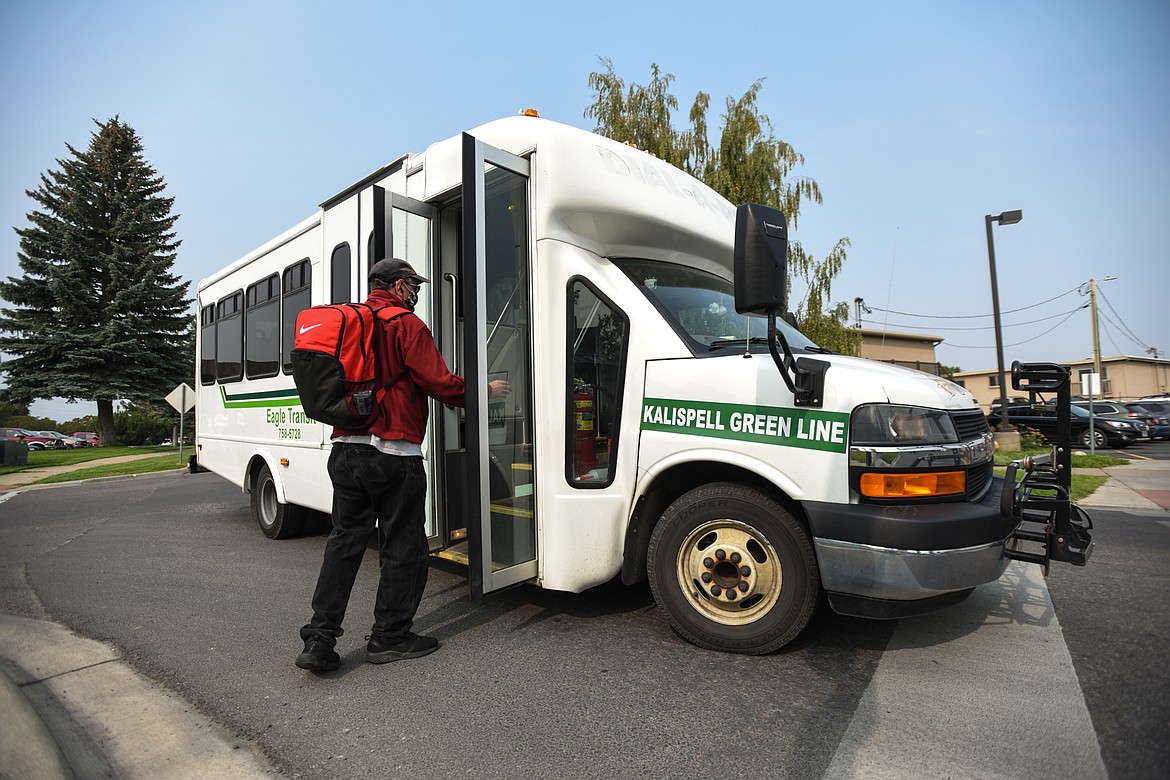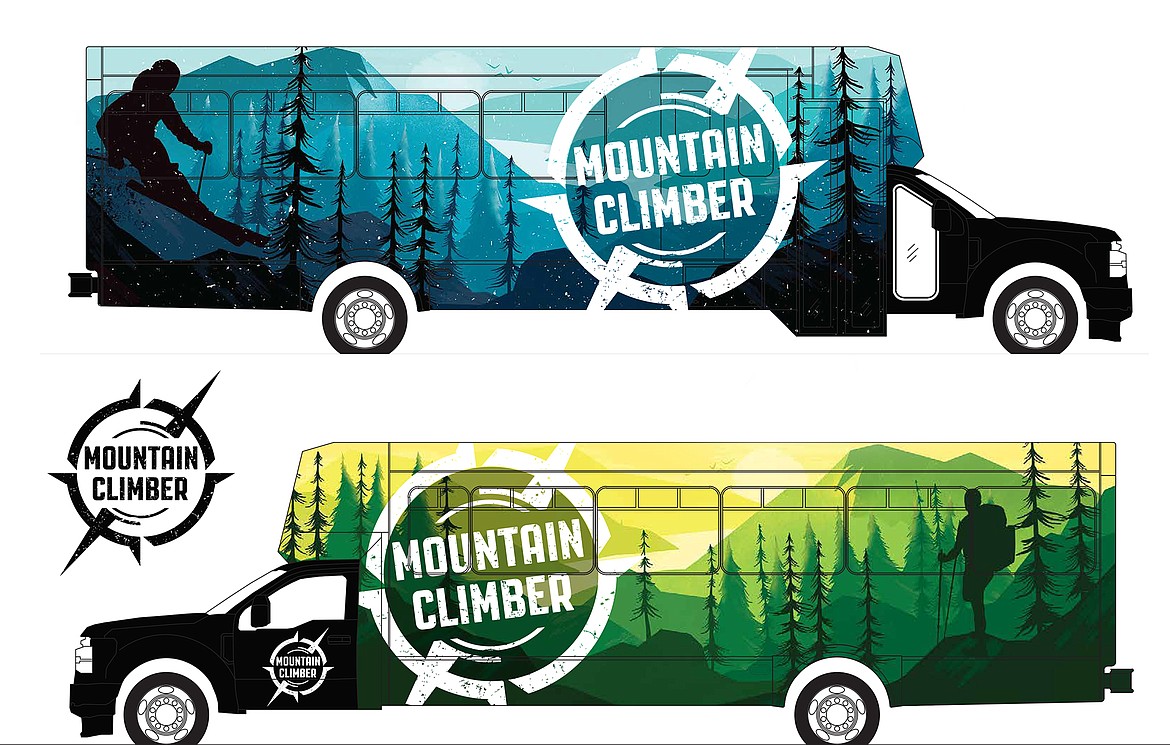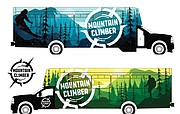Eagle Transit ready to launch ‘Mountain Climber’
Years of planning are coming to fruition for Flathead County’s public transportation system as Eagle Transit prepares to launch its new “Mountain Climber” system over the next few months. It's a bold overhaul and expansion of the current fleet and system with new routes, a new logo and eye-catching new designs on the buses.
First introduced at a public meeting for Glacier National Park’s Going-to-the-Sun Road Corridor Management Plan in September of last year, the ambitious plan calls for the expansion of the current transportation fleet as well as new commuter routes between hotels, businesses and recreational areas around the county.
“The idea is to link everything so tourists can get off their airplane, jump on a bus to get to their hotel, a major recreational area or even just go downtown to visit Kalispell’s businesses and restaurants,” Eagle Transit Manager Tom Schneider said. “The whole idea of Mountain Climber is to be able to meet our general public needs for transportation in this area, from our workers, to visitors to average people who just need to be able to get around.”
Eagle Transit is hoping the new system will continue to increase ridership on its buses, which have seen a steady increase from 85,000 rides in 2017 to more than 116,000 last year. As the operator of the free shuttle service inside Glacier National Park from 2007-2019, Eagle Transit also recorded more than 200,000 rides inside the park each of the past few years, before funding disputes led county commissioners to end the agreement in December.
According to Schneider, Eagle Transit is currently looking to reach a new agreement with the park, Whitefish Mountain, and areas in the North Fork as well as the National Forest Service and the Jewel Basin in an effort to provide public transportation routes to those areas to help ease congestion on area roads.
“Our area gets great benefits from the number of tourists we see, but there are also consequences,” Schneider said. “That much traffic can lead to infrastructure damage, road congestion and a lack of parking. It can make it hard for people to get to work or go shopping. Our plan is to help mitigate that traffic on our roads to help everyone out.”
In addition to moving tourists and adventure seekers around the valley, Schneider said another goal of the new system is to help workers get to and from businesses, as well as to offer an alternative to locals who want to stay off the roads.
“It could be a system that would really help move our locals around to where they need to go, as well as guests. The more people we can help, the better, so giving people an easy way to access the service is important,” he said. “We see more and more traffic each year and we can’t just keep ignoring the problem, because it is not going to go away. In fact, the numbers suggest that it is only going to get worse.”
WHILE EAGLE Transit currently offers routes between Kalispell, Whitefish and Columbia Falls, Schneider said his buses have the capacity to carry many more than are utilizing the system and he hopes the “Mountain Climber” will encourage more people to consider public transportation as an option.
Eagle Transit also currently offers a “Dial-a-Ride” program, which operates much like a taxi service, but Schneider said another part of the “Mountain Climber” system includes the possibility of a new demand/response system much like Uber or Via, where those needing a ride would request one on a phone-based app and then be directed to a local pickup area where a van could pick up multiple passengers.
WHILE RESEARCHING for the “Mountain Climber” system, Schneider and a few others made the trip to Maine to look into the “Island Explorer” transit system that services Acadia National Park and the surrounding area. He said the new system is based on the “Island Explorer” model, with a few key differences.
The Island Explorer system in Acadia National Park gets the majority of its $2.5 million annual budget from the national park itself, while Eagle Transit currently receives most of its annual $1.4 to 1.7 million annual budget from the Federal Transit Authority (FTA). Schneider is optimistic about finding new forms of funding through partnerships with local businesses, but he also hopes the “Mountain Climber” will lead to increased ridership numbers and additional FTA funding.
“Getting the cities onboard is really the next big step,” he said. “We have gotten a lot of great public response about this program and we are ready to move forward with it. The new name is not so much about the bus climbing mountains, it is more about the riders who use the system to overcome obstacles and climb the ‘mountains’ they are having to face every day,” Schneider said. “Most people live here so they can enjoy the wonderful things this area has to offer and we want to make sure our residents and people who come here can have access and get out and enjoy it all.”
Reporter Jeremy Weber may be reached at 758-4446 or jweber@dailyinterlake.com.





